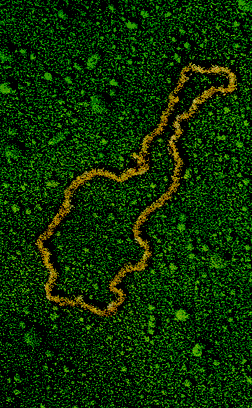Gene Technology
Concept Outline
1. The ability to manipulate DNA has led to a new genetics.
Restriction Endonucleases. Enzymes that cleave DNA at specific sites allow DNA segments from different sources to be spliced together.
Using Restriction Endonucleases to Manipulate Genes. Fragments produced by cleaving DNA with restriction endonucleases can be spliced into plasmids, which can be used to insert the DNA into host cells.
2. Genetic engineering involves easily understood procedures.
The Four Stages of a Genetic Engineering Experiment. Gene engineers cut DNA into fragments that they splice into vectors that carry the fragments into cells.
Working with Gene Clones. Gene technology is used in a variety of procedures involving DNA manipulation.
3. Biotechnology is producing a scientific revolution.
DNA Sequence Technology. The complete nucleotide sequence of the genomes of many organisms are now known. The unique DNA of every individual can be used to identify sperm, blood, or other tissues.
Biochips. Biochips are squares of glass etched with DNA strands and can be used for genetic screening.
Medical Applications. Many drugs and vaccines are now produced with gene technology.
Agricultural Applications. Gene engineers have developed crops resistant to pesticides and pests, as well as commercially superior animals.
Stem Cells. Both embryonic stem cells and tissue-specific stem cells can potentially be used to repair or replaced damaged tissue.
Ethics and Regulation. Genetic engineering raises important questions about danger and privacy.  Figure 1
Figure 1
A famous plasmid. The circular molecule in this electron micrograph is pSC101, the first plasmid used successfully to clone a vertebrate gene. Its name comes from the fact that it was the one-hundred-and-first plasmid isolated by Stanley Cohen.
Over the past decades, the development of new and powerful techniques for studying and manipulating DNA has revolutionized genetics (figure 1). These techniques have allowed biologists to intervene directly in the genetic fate of organisms for the first time. In this chapter, we will explore these technologies and consider how they apply to specific problems of great practical importance. Few areas of biology will have as great an impact on our future lives.